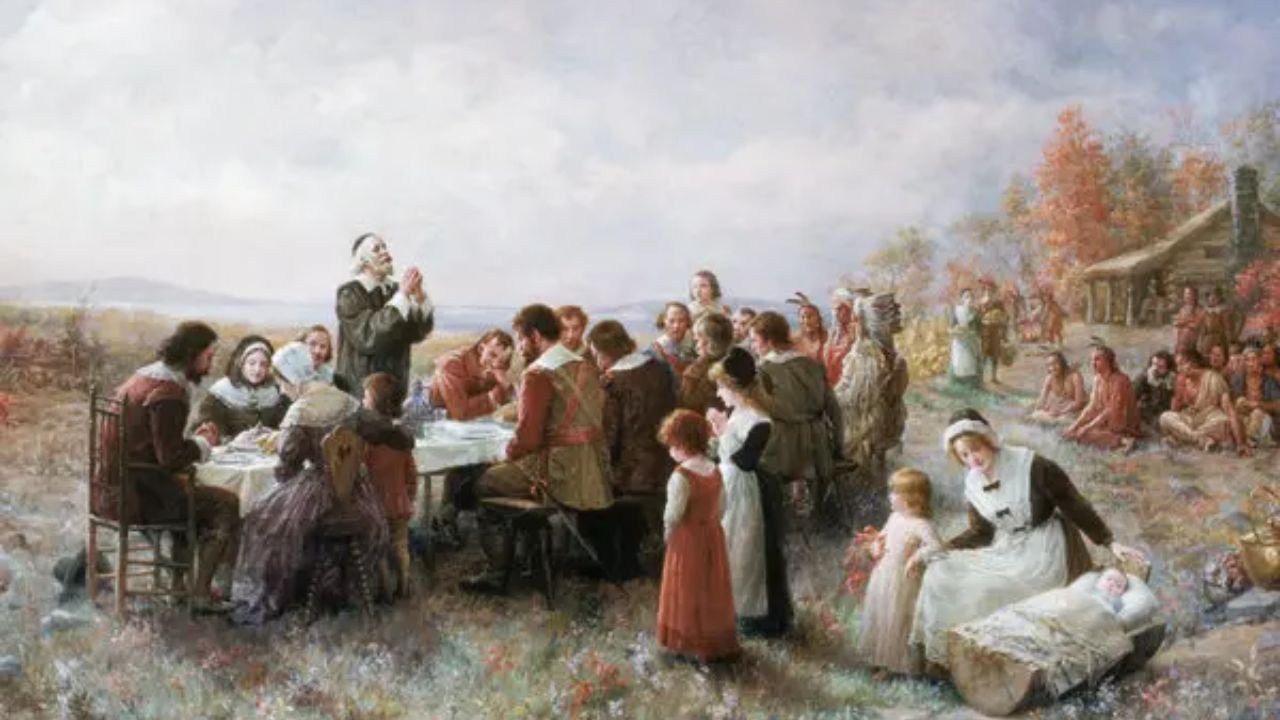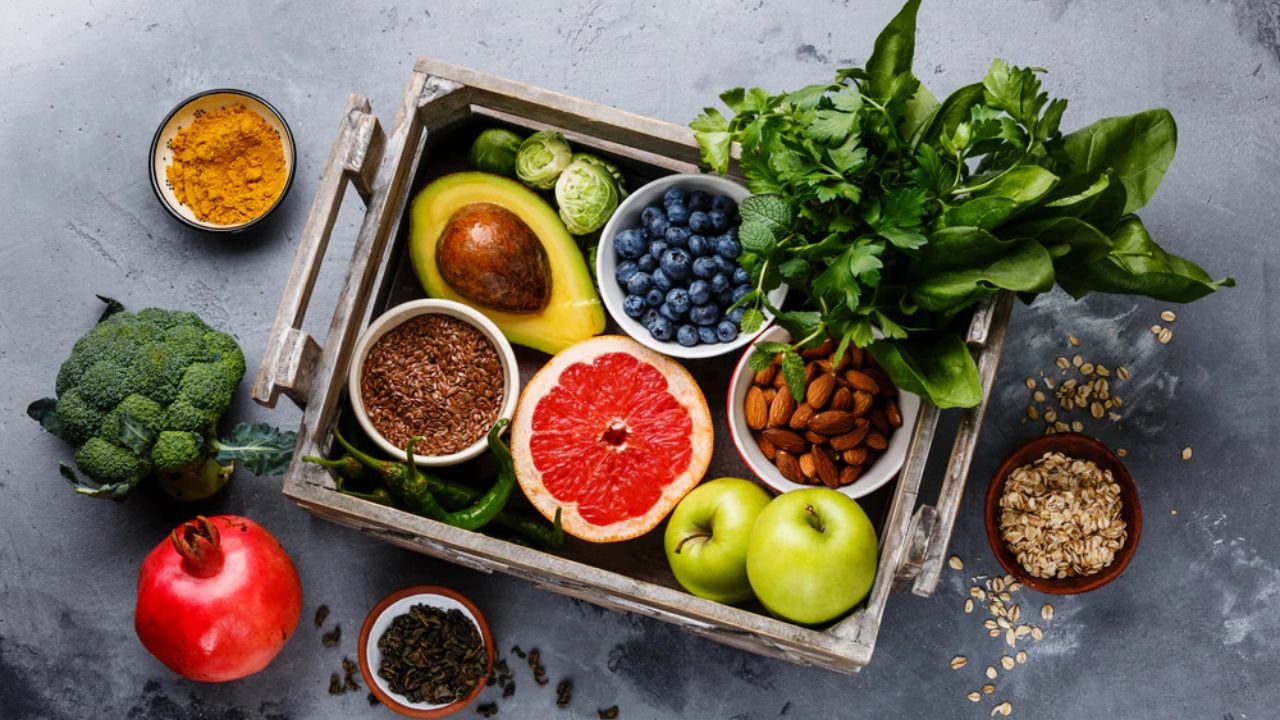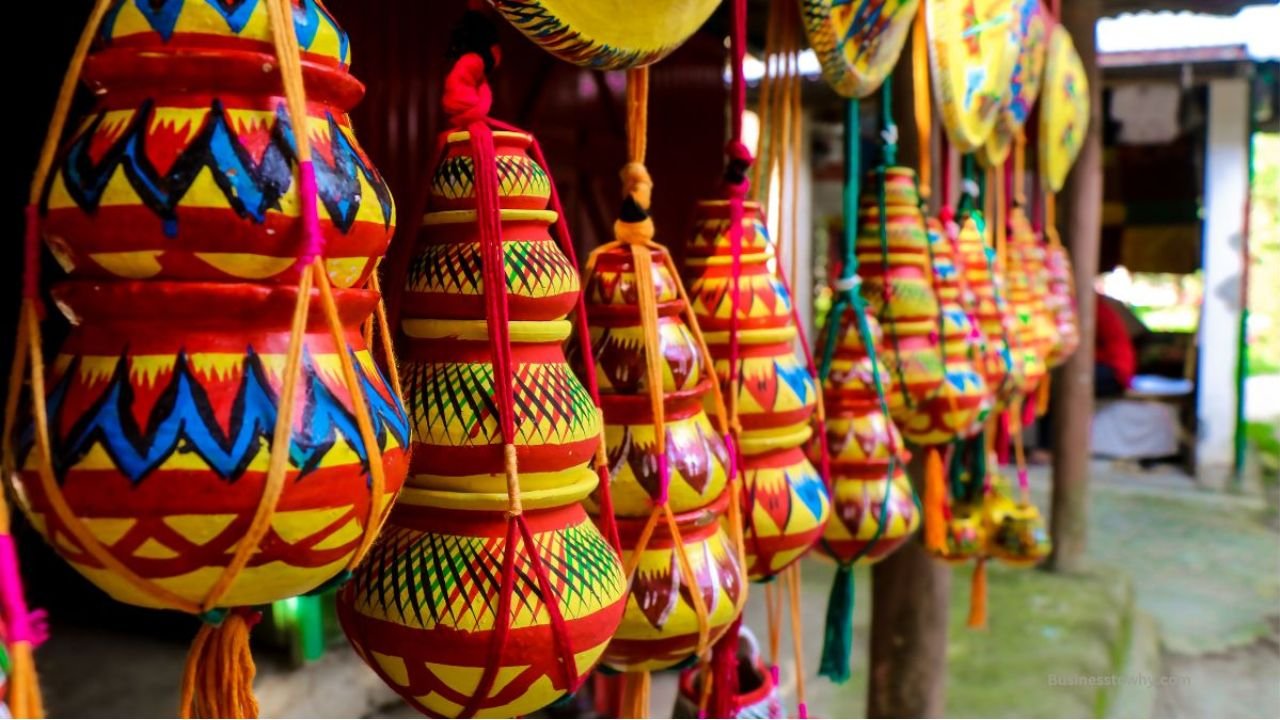Thanksgiving is a holiday that conjures images of bountiful tables, family gatherings, and joyous festivities. But how much do we really know about its origins and evolution? Let’s unravel the intricate tapestry of Thanksgiving’s history, exploring its early beginnings, transformations through the ages, and its place in today’s world.
Introduction
Thanksgiving, a day synonymous with gratitude, family, and indulgence, holds a storied past often overshadowed by contemporary celebrations. Did you know that Thanksgiving was not always celebrated on the fourth Thursday of November? This day of thanks has traversed centuries, evolving from humble harvest celebrations to a national holiday filled with diverse traditions.
For history enthusiasts, students, families, and cultural explorers alike, the history of Thanksgiving offers a fascinating glimpse into the fabric of American culture. This blog post aims to guide you through its captivating story, from the early harvest festivals and the iconic 1621 feast to the modern-day festivities. By the end, you’ll have a deeper appreciation for this beloved holiday and the cultural narratives it embodies.
History of Thanksgiving
Early Celebrations
Long before Thanksgiving became a national holiday, early harvest festivals were celebrated across various cultures, marking the end of the harvest season. These festivals were characterized by communal feasting, music, and dance, providing people an opportunity to give thanks for a bountiful harvest. The Pilgrims, influenced by such traditions in Europe, brought this spirit of gratitude to the New World.
In England, Harvest Home festivals were a common sight, where villagers gathered to share the fruits of their labor. Similarly, ancient Greek and Roman cultures held feasts in honor of the fertility gods, thanking them for the abundance of crops. These early celebrations laid the foundation for Thanksgiving as we know it today, intertwining themes of gratitude and community.
The transition from these early harvest festivals to Thanksgiving was gradual. The Pilgrims, upon arriving in America, continued the tradition of giving thanks. However, the exact nature of these celebrations was distinct from today’s Thanksgiving, focusing more on survival and communal support than on revelry.
The Pilgrims and the Wampanoag
The story of Thanksgiving often begins with the 1621 feast shared by the Pilgrims and the Wampanoag people. After a devastating winter, the Pilgrims’ first successful harvest was a cause for celebration. They invited their Native American allies to join in a three-day feast, marking a brief moment of peace and cooperation.
This gathering was significant not only for its display of unity but also for the cultural exchange that took place. The Wampanoag, who had aided the Pilgrims in adapting to the land, brought their farming knowledge and traditional foods to the table. Together, they dined on venison, fowl, and corn, among other dishes.
Despite the harmony depicted in many historical accounts, the relationship between the Pilgrims and the Wampanoag was complex. While the feast symbolized a moment of mutual respect, it was not reflective of the broader context of colonization, which led to significant conflict and hardship for Native Americans.
Evolution of the Holiday
Colonial Celebrations
Throughout the colonial period, Thanksgiving was celebrated at different times and in various ways across the colonies. In New England, days of thanksgiving and prayer were declared by religious leaders as a means to give thanks for blessings such as military victories or abundant harvests.
These early observances were less about feasting and more focused on spiritual reflection and prayer. Communities came together in churches to offer gratitude, with meals serving as a secondary aspect of the day. The diversity of these celebrations illustrates the regional differences in how Thanksgiving was perceived and practiced.
Over time, secular elements began to seep into the holiday, with feasting growing in importance. The communal aspect remained, but the day started to transform, laying the groundwork for the Thanksgiving we recognize today.
National Proclamation
The path to establishing Thanksgiving as a national holiday was paved by Mary Ball Washington and later realized by President Abraham Lincoln. Amidst the turmoil of the Civil War, Lincoln issued a proclamation in 1863, designating the last Thursday of November as a national day of Thanksgiving.
Lincoln’s proclamation was a call for unity and healing, urging Americans to set aside their differences and give thanks for the nation’s blessings. This declaration marked a turning point for Thanksgiving, solidifying its place in the American calendar as a unifying holiday during a time of division.
The impact of this proclamation was profound, establishing a tradition that would endure and evolve through subsequent generations. Lincoln’s vision of Thanksgiving as a day of national reflection and gratitude continues to resonate, underscoring the holiday’s enduring significance.
Modern Traditions
Food and Feasting
When we think of Thanksgiving, images of turkey, stuffing, cranberry sauce, and pumpkin pie immediately come to mind. These traditional dishes have roots in the early American diet but have since been embellished and popularized to fit modern tastes.
Turkey, often regarded as the centerpiece of the Thanksgiving meal, became associated with the holiday due to its availability and size—ideal for feeding large gatherings. Side dishes like stuffing and cranberry sauce complement the turkey, offering a blend of flavors that are both savory and sweet.
Pumpkin pie, another Thanksgiving staple, traces its origins to Native American recipes, highlighting the influence of indigenous foods on the holiday. Over the years, these dishes have become emblematic of Thanksgiving, embodying the spirit of abundance and sharing.
Parades and Football
Thanksgiving wouldn’t be complete without the spectacle of parades and the excitement of football games. The Macy’s Thanksgiving Day Parade, first held in 1924, has become an iconic part of the holiday, featuring floats, balloons, and performances that captivate audiences across the nation.
Football, another Thanksgiving tradition, began in the late 19th century and quickly became a staple of the holiday. The annual games provide entertainment and a sense of camaraderie, bringing families and friends together to cheer for their favorite teams.
These traditions, while seemingly disparate, contribute to the festive atmosphere of Thanksgiving. They offer opportunities for people to come together, celebrate, and create cherished memories.
Family and Community
At its core, Thanksgiving is about family and community. It’s a time for loved ones to gather, strengthen bonds, and express gratitude for one another. The holiday serves as a reminder of the importance of relationships and the joy of shared experiences.
In many households, Thanksgiving is marked by traditions passed down through generations, from specific recipes to activities like volunteering at local shelters. These customs foster a sense of belonging and continuity, connecting individuals to their heritage and community.
Beyond the family unit, Thanksgiving encourages acts of kindness and generosity. Many people choose to volunteer or donate during this time, extending the spirit of gratitude to those in need and reinforcing the holiday’s message of compassion and unity.
Controversies and Criticisms
Historical Accuracy
The traditional narrative of Thanksgiving has been romanticized over the years, often glossing over the complexities of its history. While the 1621 feast is celebrated as a moment of harmony, it’s important to acknowledge the broader context of European colonization and its impact on Native American communities.
Historians and educators are increasingly working to present a more nuanced view of Thanksgiving, emphasizing the need for critical reflection and understanding. This includes acknowledging the contributions of indigenous peoples and addressing the challenges they faced during and after colonization.
By examining the historical accuracy of Thanksgiving, we can foster a more inclusive narrative that honors the diverse perspectives and experiences that shape the holiday.
Native American Perspectives
For many Native Americans, Thanksgiving is a day of mourning rather than celebration, symbolizing loss, resilience, and reflection. The holiday serves as a reminder of the hardships endured by indigenous communities due to colonization and displacement.
In response, some Native American groups have established alternative observances, such as the National Day of Mourning, to honor their ancestors and preserve their cultural heritage. These gatherings provide a platform for reflection, education, and solidarity.
By recognizing and respecting Native American perspectives, we can foster greater understanding and empathy, contributing to a more inclusive and respectful celebration of Thanksgiving.
Thanksgiving Around the World
Canada
Thanksgiving is not exclusive to the United States; our northern neighbors in Canada celebrate their own version of the holiday. Canadian Thanksgiving takes place on the second Monday in October, marking the end of the harvest season and providing an opportunity for gratitude and reflection.
Similar to American Thanksgiving, the Canadian celebration involves family gatherings, festive meals, and expressions of thanks. However, the historical context and cultural influences differ, resulting in unique traditions and customs.
Exploring Canadian Thanksgiving offers a broader perspective on the holiday, highlighting its adaptability and the universal themes of gratitude and togetherness.
Other Countries
While Thanksgiving is most closely associated with North America, similar harvest festivals exist in various cultures worldwide. These celebrations, rooted in agricultural traditions, emphasize themes of abundance, gratitude, and community.
In Germany, the festival of Erntedankfest is observed with church services, parades, and feasting. In Japan, Labor Thanksgiving Day occurs on November 23, combining elements of harvest celebrations with expressions of appreciation for labor and production.
These global observances demonstrate the shared human desire to celebrate and give thanks for the gifts of the earth, transcending cultural and geographic boundaries.
Fun Facts and Trivia
Thanksgiving is filled with fun facts and trivia, adding a playful dimension to the holiday. Did you know that the first Macy’s Thanksgiving Day Parade featured live animals from the Central Park Zoo? Or that the tradition of presidential turkey pardons dates back to the 1940s?
The holiday is also rich in quirky customs, like the annual Turkey Trot races held in towns across the country. These tidbits offer a lighthearted glimpse into the diverse ways people celebrate and enjoy Thanksgiving.
Sharing fun facts and trivia can spark conversation and curiosity, enhancing the festive spirit of the holiday and connecting people through shared stories and laughter.
You May Also Like: Significant Events and Changes from 2023-1954: A Historical Overview
Conclusion
Thanksgiving’s rich history and diverse traditions make it a holiday of profound significance and complexity. From its early beginnings as a harvest celebration to its current status as a national holiday, Thanksgiving has evolved to encompass themes of gratitude, unity, and reflection.
For history enthusiasts, students, families, and cultural explorers, the story of Thanksgiving offers valuable insights into the cultural fabric of America. By examining its past and present, we can foster a deeper appreciation for the holiday and the diverse narratives it embodies.
Whether you’re enjoying a traditional feast with loved ones or reflecting on the historical complexities of the holiday, Thanksgiving offers an opportunity to connect, celebrate, and give thanks. For those eager to explore more, numerous resources and discussions await, inviting you to deepen your understanding and appreciation of this cherished holiday.
Frequently Asked Questions
What is the historical significance of Thanksgiving?
Thanksgiving traces its origins to a 1621 feast between the Pilgrims and Wampanoag Native Americans, seen as a moment of harmony. However, the broader context involves the complexities of European colonization and its impact on Native American communities. Historians stress the importance of acknowledging these complexities to foster a more inclusive and accurate narrative.
How do Native Americans view Thanksgiving?
For many Native Americans, Thanksgiving is a day of mourning rather than celebration. It serves as a reminder of the hardships caused by colonization and displacement. Some Native groups observe the National Day of Mourning to honor their ancestors and cultural heritage, promoting reflection, education, and solidarity.
How is Canadian Thanksgiving different from American Thanksgiving?
Canadian Thanksgiving occurs on the second Monday in October, marking the end of the harvest season. While it shares similarities with American Thanksgiving, such as family gatherings and festive meals, the historical context and cultural influences differ, resulting in unique traditions and customs.
Are there similar holidays to Thanksgiving in other parts of the world?
Yes, various cultures celebrate similar harvest festivals. In Germany, Erntedankfest includes church services and parades. In Japan, Labor Thanksgiving Day on November 23 combines harvest celebration with appreciation for labor. These festivals emphasize themes of abundance, gratitude, and community, transcending cultural boundaries.
What are some fun facts about Thanksgiving?
Thanksgiving is rich with trivia and quirky customs. The first Macy’s Thanksgiving Day Parade featured live animals from the Central Park Zoo. The tradition of presidential turkey pardons dates back to the 1940s. Additionally, Turkey Trot races are annual events held in many towns across the country, adding a playful dimension to the holiday.










